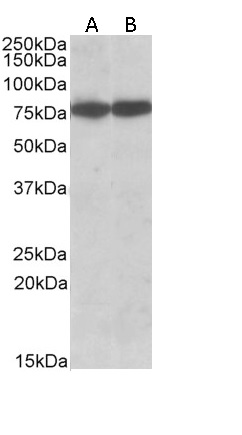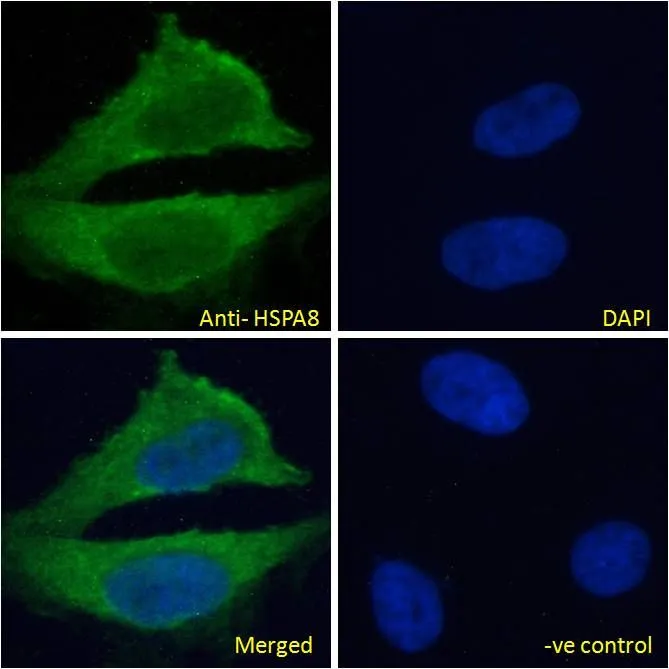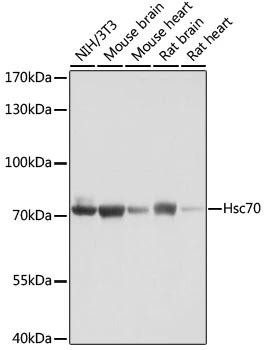HSC70 antibody [HL1788]
GTX637440
ApplicationsWestern Blot, ImmunoHistoChemistry, ImmunoHistoChemistry Paraffin
Product group Antibodies
TargetHSPA8
Overview
- SupplierGeneTex
- Product NameHSC70 antibody [HL1788]
- Delivery Days Customer9
- Application Supplier NoteWB: 1:5000-1:30000. *Optimal dilutions/concentrations should be determined by the researcher.Not tested in other applications.
- ApplicationsWestern Blot, ImmunoHistoChemistry, ImmunoHistoChemistry Paraffin
- CertificationResearch Use Only
- ClonalityMonoclonal
- Clone IDHL1788
- Concentration1 mg/ml
- ConjugateUnconjugated
- Gene ID3312
- Target nameHSPA8
- Target descriptionheat shock protein family A (Hsp70) member 8
- Target synonymsHEL-33, HEL-S-72p, HSC54, HSC70, HSC71, HSP71, HSP73, HSPA10, LAP-1, LAP1, NIP71, heat shock cognate 71 kDa protein, LPS-associated protein 1, N-myristoyltransferase inhibitor protein 71, constitutive heat shock protein 70, epididymis luminal protein 33, epididymis secretory sperm binding protein Li 72p, heat shock 70kDa protein 8, heat shock 70kd protein 10, heat shock cognate protein 54, heat shock protein family A member 8, lipopolysaccharide-associated protein 1
- HostRabbit
- IsotypeIgG
- Protein IDP11142
- Protein NameHeat shock cognate 71 kDa protein
- Scientific DescriptionThis gene encodes a member of the heat shock protein 70 family, which contains both heat-inducible and constitutively expressed members. This protein belongs to the latter group, which are also referred to as heat-shock cognate proteins. It functions as a chaperone, and binds to nascent polypeptides to facilitate correct folding. It also functions as an ATPase in the disassembly of clathrin-coated vesicles during transport of membrane components through the cell. Alternatively spliced transcript variants encoding different isoforms have been found for this gene. [provided by RefSeq, Aug 2011]
- Storage Instruction-20°C or -80°C,2°C to 8°C
- UNSPSC12352203




